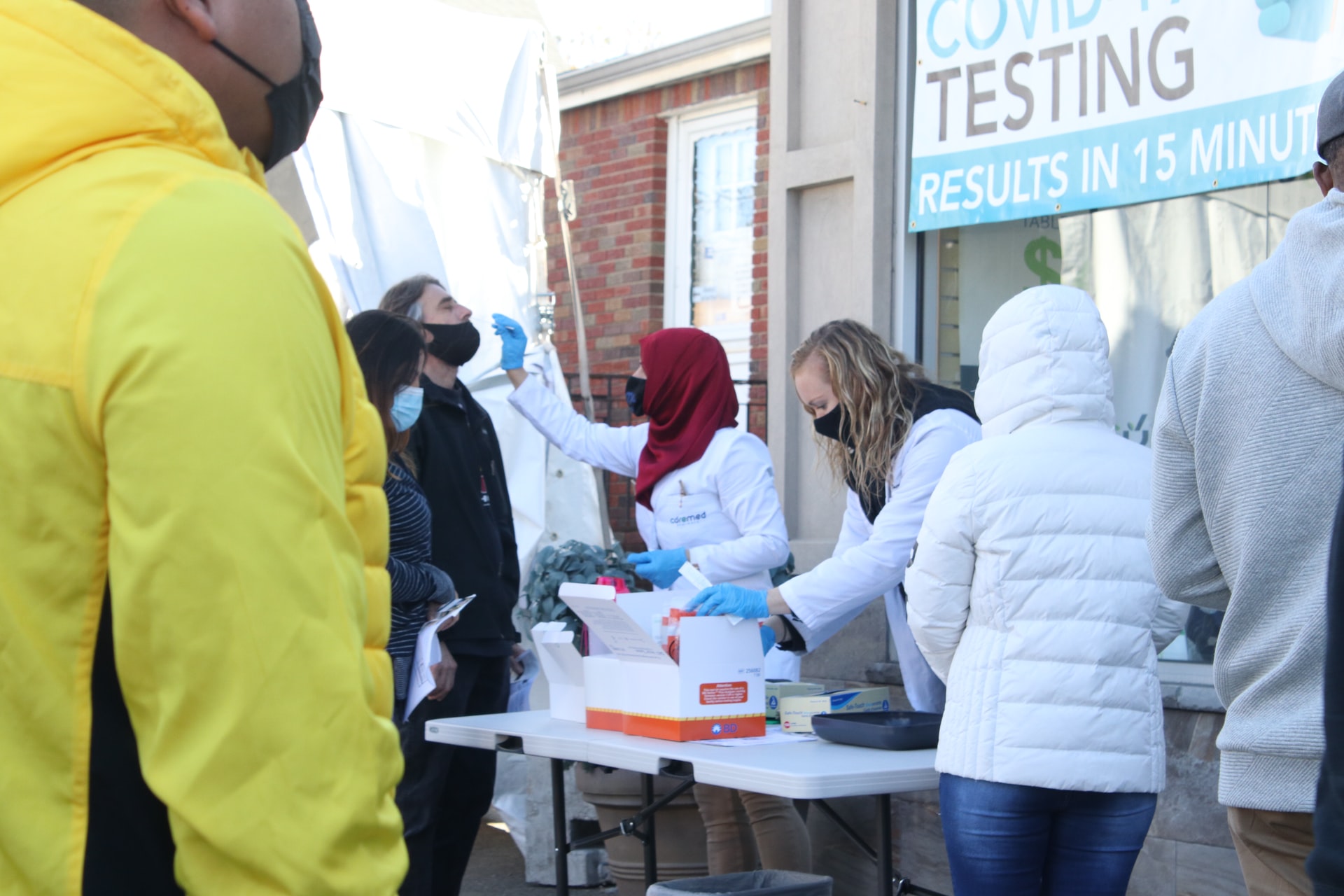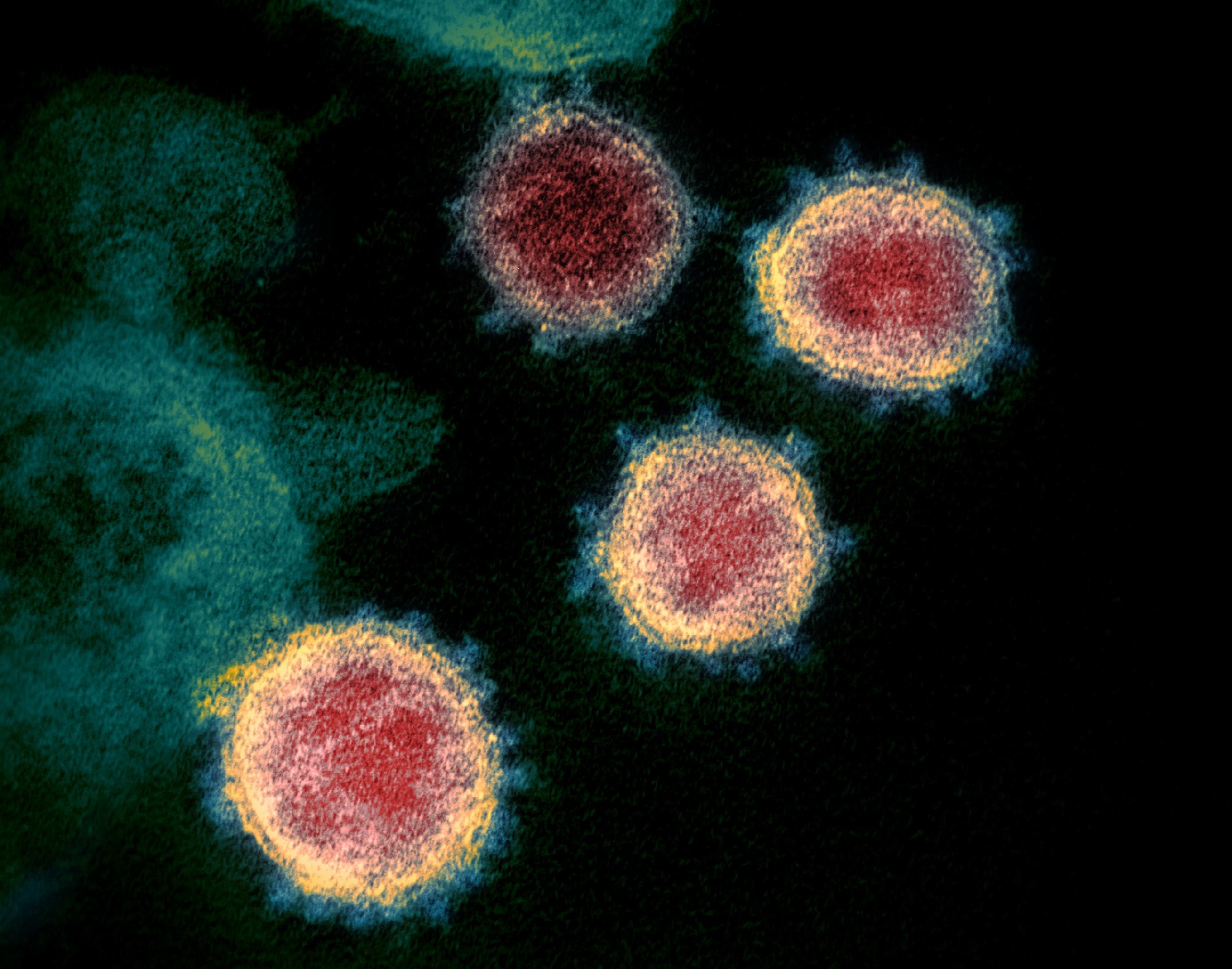COVID-19 – Everything You Need to Know About Coronavirus
- /
- COVID-19

COVID-19
Origin
The end of the 2019 brought us something we didn’t expect. Chinese health authorities reported and outbreak of very dangerous pneumonia-like disease in Wuhan, China. Few days later it was identified that a small virus – to be specific – coronavirus termed then as SARS-CoV-2 is responsible for causing the disease, which was named COVID-19. What was unexpected, the virus has very high spreading ability, which allowed it to spread across the globe, causing a lot of damage to our health and economy.
What is SARS-CoV-2?

SARS CoV-2 under the microscope
Multiple coronaviruses (CoV) were identified as human pathogens in the 1960s. Coronavirus belongs to the family Coronaviridae which are enveloped positive single-stranded RNA viruses. Their name comes from their overall structure, as they possess characteristic protein spikes on their surface which gives them crown-like appearance. This virus family was a hot topic due to the outbreaks of Severe Acute Respiratory Syndrome (SARS) in 2002 and Middle East Respiratory Syndrome (MERS) in 2012. These two are zoonotic in origin, which means that they infect animals (i.e. birds, bats, mammals). In some cases they can change host to human and cause severe respiratory syndrome. Often infection with these viruses leads to death. Virus Sars-CoV-2 is no different to previous examples.
Symptoms
Patients suffering from the infection with SARS-CoV-2 virus have a wide range of symptoms ranging from those of the common cold to very severe cases of lower respiratory system infection. Headache, loss of smell and taste, cough, fever, shortness of breath, sore throat are the most commonly reported symptoms. In case of patients who develop acute respiratory distress syndrome, their condition can rapidly worsen and lead to death due to multiple organ failure. 2-10% of patients reported that due to COVID-19 they suffered from gastrointestinal symptoms such as vomiting, diarrhoea and abdominal pain. Presented symptoms are different in every patient and it is still unknown what are the exact principles in developing particular course of illness.
Risk factors
However, It was observed that certain health conditions may contribute to occurrence of severe COVID-19 symptoms. Among them are hypertension, diabetes, cardiovascular disease, chronic respiratory disease, chronic kidney disease, immune compromised status, cancer, smoking and obesity. Moreover, residents of long-term care facilities and people aged 60 and above are an especially vulnerable group, which means they have an elevated risk of severe course of illness, which may result in death due to COVID-19.
Transmission

The exact mechanism of transmission of SARS-CoV-2 virus in not fully elucidated yet. Although,what is known is that human-to-human transmission occurs mainly via droplets. These droplets are generated by breathing, sneezing, coughing etc. Other way of transmission is through contact, for example hand mediated transfer of the virus from contaminated surface to the mouth, nose or eyes. Another possible way of viral transmission is the oral-fecal route. Scientists detected SARS-CoV-2 in sewage water of two Chinese hospitals in which patients affected by COVID-19 were treated.
Asymptomatic infection
Asymptomatic infection is reported in about 20% of cases. A majority of these patients developed symptoms later on and only 8.4% of them remained asymptomatic. In case of children these numbers can rise even up to 30%.
Incubation
It was estimated that the average period of incubation of the virus is 5 days and more than 97% of infected people develop symptoms within 12 days. This is why 14-day monitoring of people who have been in contact with a person suffering from COVID-19 is advised.
Complications
The major complication of COVID-19 is acute respiratory distress syndrome (ARDS) which requires mechanical ventilation of the patient. COVID-19 was also linked to cardiovascular problems such as myocardial injury, arrythmias, cardiomyopathy and heart failure as well as kidney injury.
Diagnostics
Sample for diagnostic test is taken mostly from the upper respiratory tract (nasopharyngeal/oropharyngeal swabs). There are three main types of tests in COVID-19 diagnostics based on the detected target. In the first type of the test presence of nucleic acid- the viral RNA is detected. This type of test is called RT-PCR. Second type – antigen test can detect the presence of viral antigen, typically part of the protein present on the surface of the virus. Last type, is an antibody test which detects the presence of antibodies that our body produces as a response against SARS-CoV-2 during infection.
References:
-
- Zhu N, Zhang D, Wang W, Li X, Yang B, Song J, et al. China Novel Coronavirus Investigating and Research Team A Novel Coronavirus from Patients with Pneumonia in China, 2019. N Engl J Med. 2020 Feb;382((8)):727–33.
- Ciotti M, Angeletti S, Minieri M, et al. COVID-19 Outbreak: An Overview. Chemotherapy. 2019;64(5-6):215-223. doi:10.1159/000507423
- European Centre for Disease Prevention and Control